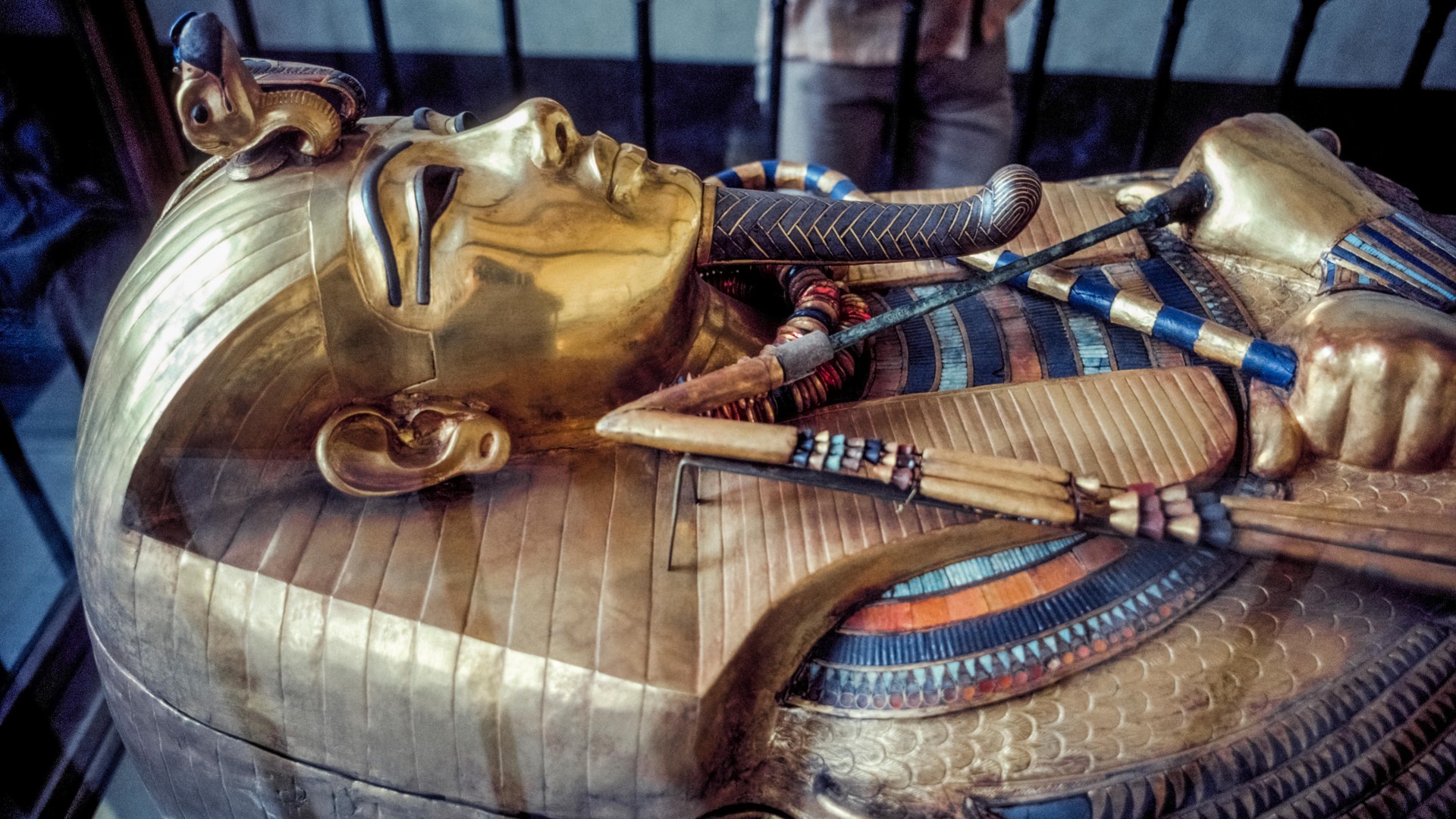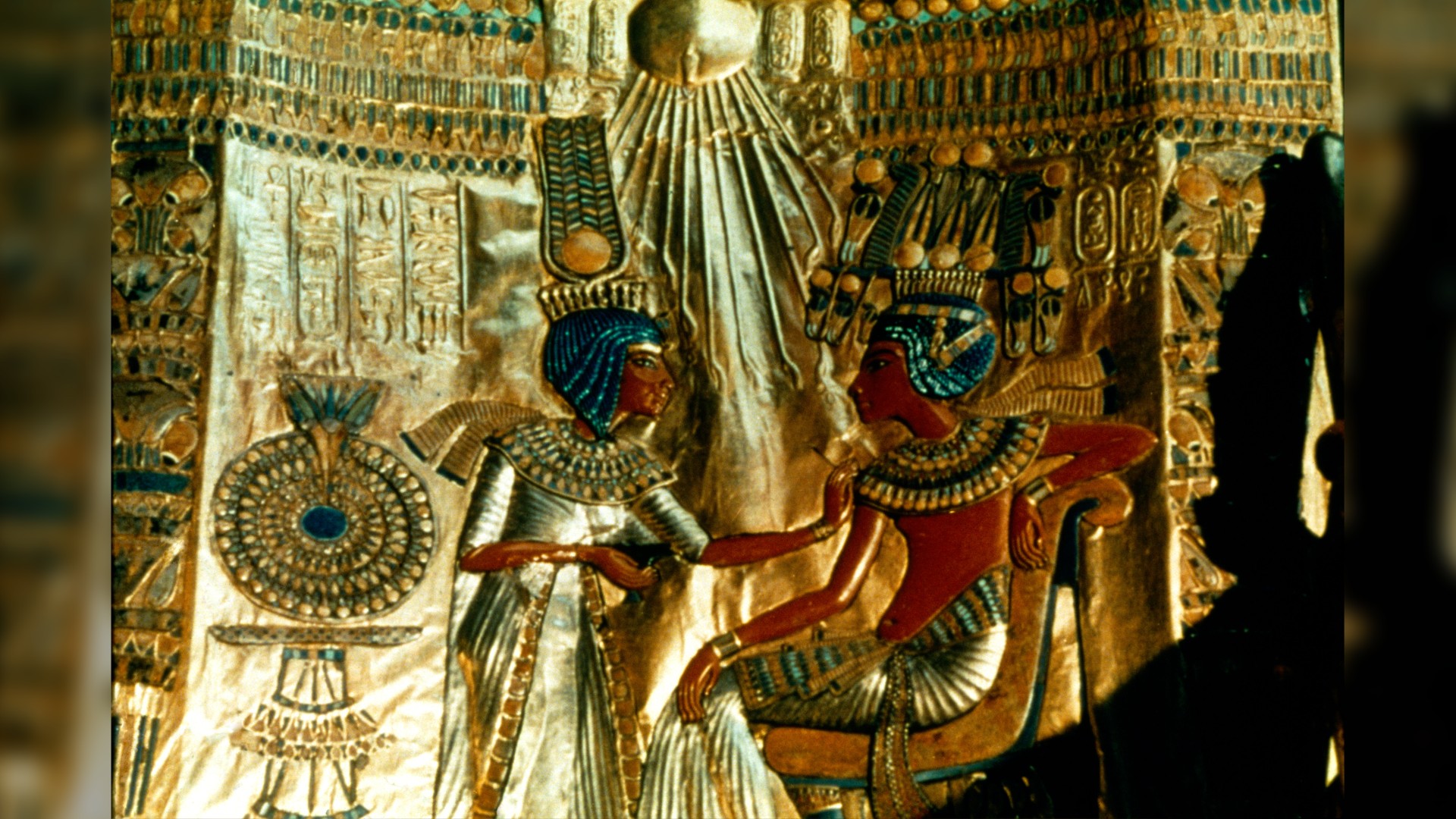Who ruled ancient Egypt after King Tut died?
When the pharaoh Tutankhamun died young, his widow may have tried to remain on the Egyptian throne, ancient letters reveal.

Tutankhamun, the famed ancient Egyptian "boy king" who ascended the throne as a child, died when he was around 19 years old, sometime between 1327 B.C and 1323 B.C. But Tut's death was unexpected, and he left no heirs to the throne. So who ruled in the power vacuum that followed?
After King Tut died, a pharaoh named Ay (also spelled Aya) ascended the throne and ruled for about four years until he died.
Ay had been a senior royal official for many years and may have been the father of Nefertiti, the wife of Tut's father, Akhenaten. Evidence of this is found in his title of "God's Father," which may imply that Ay was the father-in-law of Akhenaten, Aidan Dodson, an Egyptology professor at the University of Bristol in the U.K., wrote in his book "Amarna Sunset: Nefertiti, Tutankhamun, Ay, Horemheb, and the Egyptian counter-reformation" (American University in Cairo Press, 2009).
But Ay wasn't welcomed by the former ruling family. Ancient letters suggest that Tutankhamun's widow, Ankhesenamun, was desperate to prevent Ay from becoming pharaoh and asked the Hittites, a kingdom based in Anatolia (modern-day Turkey), to send a prince who could marry her and rule Egypt, Dodson wrote. Surviving copies of the correspondence were found over a century ago and the first translation was published in French in 1931, wrote Hans Gustav Güterbock, who was a German-American Hittite expert, in a 1956 article published in the Journal of Cuneiform Studies.
The Hittite king, Suppiluliuma I, found it difficult to believe that the Egyptians would allow a Hittite to be pharaoh, but eventually sent one of his sons, Zannanza (also spelled Zananzash), to Egypt. He died either along the way or after entering Egypt, Dodson wrote, noting that it's possible Zannanza's death was due to natural causes, as historical records suggest there was an epidemic in the area he would have traveled through. However, it is also possible that Zannanza was assassinated, wrote Dodson in his book, noting that there may have been a faction in the Egyptian court who opposed a Hittite becoming king that arranged his death.
Related: Why did ancient Egyptian pharaohs stop building pyramids?
To avoid being sidelined, Ankhesenamun may have tried to get a Hittite husband after Tutankhamun died, Dodson said. "I think it was a means of maintaining her personal power: a foreign husband would be dependent on her," Dodson told Live Science in an email.
Get the world’s most fascinating discoveries delivered straight to your inbox.
Ay may have been related to Ankhesenamun, possibly her grandfather. Even so, if Ay ascended the throne, Ankhesenamun likely understood that he and his son Nakhtmin would relieve her of any power, Dodson said. So her plan to marry a Hittite was "probably pure personal ambition," he said.
That said, not everyone agrees that Ankhesenamun actually wrote those letters, said Joyce Tyldesley, an Egyptology professor at the University of Manchester in the U.K. "We have to be very careful not to take the Hittite letter at face value," Tyldesley told Live Science in an email. "Is this really a genuine appeal for a husband — this seems most unlikely."
Ankhesenamun "was born royal and could have ruled in her own right," Tyldesley said, noting that it is unlikely Egyptians would have accepted a Hittite prince as pharaoh. "So is the letter perhaps part of a plot, hatched either at the Hittite court or the Egyptian one?"
In any case, with Zannanza dead, Ankhesenamun's plan (hatched by her or someone else) fell through, and Ay took over. Ay's reign was brief, no more than a few years; he built a mortuary temple in Thebes (modern-day Luxor) and had a tomb prepared for himself in the Valley of the Kings.
The end of Ay's reign was also controversial. His unrelated successor, Horemheb (also spelled Haremhab), had Ay's tomb desecrated, erasing the names and images of Ay and his wife, Tey (also spelled Tiy), Richard Wilkinson, an Egyptology professor at the University of Arizona, wrote in a chapter of the book "The Oxford Handbook of the Valley of the Kings" (Oxford University Press, 2014).
"There seems to have been a power-struggle between Ay's son Nakhtmin and Horemheb, and having won, Horemheb needed to show that Ay had been a 'bad thing,'" Dodson said.
Aside from desecrating Ay's tomb, Horemheb released a decree that denounced him. The decree described "the period before his accession as one of disorder and corruption," Dodson said.

Owen Jarus is a regular contributor to Live Science who writes about archaeology and humans' past. He has also written for The Independent (UK), The Canadian Press (CP) and The Associated Press (AP), among others. Owen has a bachelor of arts degree from the University of Toronto and a journalism degree from Ryerson University.




